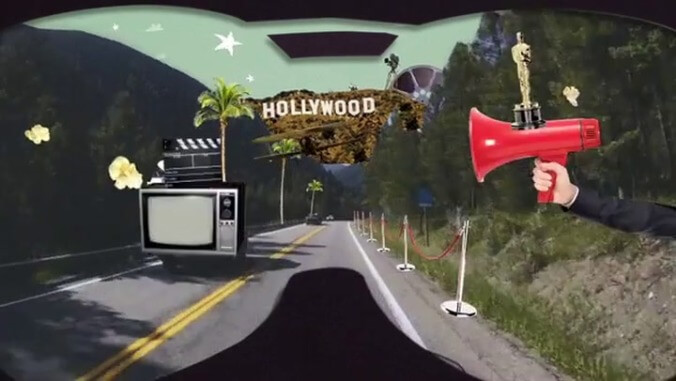Visiting Bob Dylan’s hometown
Rootlessness is a common theme in any discussion of Bob Dylan—Dont Look Back, No Direction Home—necessary because of the reinvention inherent in his persona. Long before Bob Dylan walked the streets of New York’s Greenwich Village, even before “Bob Dylan” strode out of the Dinkytown cafes of Minneapolis, he was just Robert Zimmerman, son of a local appliance-store owner in the small mining town of Hibbing, Minnesota. Because Dylan so yearned to be a Woody Guthrie-style wandering troubadour, he simply made himself one, picked a new name and a new city, and, to paraphrase D.A. Pennebaker’s documentary, didn’t look back. He all but disowned his past and the home that defined it. And in the years since, the distance between them simply became too great to ever cross again, or so the legend goes.
The myth that Bob Dylan hates his hometown is a pervasive one, and it’s echoed by a sort of mutual—if not hate, then a definite disinterest. Pick up a brochure at the Hibbing Park Hotel, and you’ll learn all about the local Greyhound Bus Museum (the company’s founder hailed from there) and the Hull-Rust-Mahoning Mine (“the largest open pit iron-ore mine in the world!”), while Dylan’s name is included almost as an afterthought in a list of other hometown boys like professional athletes Roger Maris and Kevin McHale. A smattering of clippings, posters, and other ephemera in the local library compose the city’s “Dylan Collection,” and the librarian hosts a simple walking tour by appointment. Otherwise the town’s acknowledgement of its most famous son is primarily limited to a street sign and a theme restaurant named Zimmy’s, and both only exist because of a Philadelphia transplant and fan who was confused by Hibbing’s apparent indifference.
Linda Stroback-Hocking is currently the co-owner of Zimmy’s, but she’s worked there since its ’80s incarnation as The Atrium. When the time came to renovate, it was her suggestion they make it into a Dylan tribute, giving the pilgrims to Dylan’s childhood home some sort of way station (as well as a place to eat a “Hard Rain” Hamburger or “Simple Twist Of” Steak platter). Her proposal ended up all but consuming her: Stroback-Hocking now functions as one of the town’s de facto Dylan ambassadors, answering questions for visitors and press, acquiring pieces for the restaurant’s ever-growing archive of memorabilia, and hosting the town’s annual Dylan Days festival on his birthday. Linda has never even met the man, though she’s friendly with his former teachers and high-school girlfriend, Echo Helstrom (the rumored inspiration for “Girl From The North Country”). But she gives the impression she spends most of her life talking about him, arguing for Dylan's importance in a town that, by and large, prefers its other famous erstwhile musical resident, Gary Puckett.
And yet, as both Stroback-Hocking and the front wall of her restaurant take pains to point out, the belief that Bob Dylan hates his hometown is a mistake. He’s consistently expressed pride about his Midwestern heritage (if never quite being geographically specific about it), pointing to it as the true soul of his songwriting. And, as you discover once you’re actually in Hibbing, he wasn’t exactly living a life of oppression while he was there. In fact, he would seem to have had very little to hate about it.
Walking the route laid out in Robert Shelton’s 1986 biography, No Direction Home: The Life And Music Of Bob Dylan, takes you along the virtually unchanged Howard Street; past the former site of the Lybba Theater (named for Dylan’s maternal grandmother); past the cafes where he played with his cover band, The Golden Chords; past the family appliance store; past the Androy Hotel where his bar mitzvah drew some 400 guests; and on to the modest yet prominently placed two-story home where he helped girls sneak in through his bedroom window. And just down the street from his house, along what is now named (at Stroback-Hocking’s urging) Bob Dylan Drive, within the vast halls of Hibbing High School (fittingly nicknamed the “Castle In The Woods”), Dylan rankled his first authority figures by bashing out Little Richard songs, playing his earliest rock ’n’ roll triumphs in a lavish, chandelier-bedecked auditorium in front of over a thousand people. Bob Dylan didn’t have to leave Hibbing to become a star. In this town, he already was one.
In truth, if Dylan has any misgivings about his origins, it probably had less to do with Hibbing itself than the natural attitude of anyone who believes they’re destined for bigger things. Dylan wanted to reinvent himself. Hibbing wanted to remain the same. But in his songs you can hear him reaching back for those roots, that sense of a compass searching for a direction home. Some part of Bob Dylan must be reassured knowing that it’s still there.
